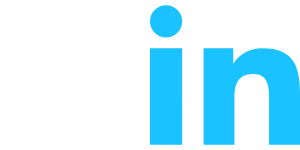COVID-19 fraud alert: Criminals may use the Coronavirus outbreak to pose as people or organisation you trust, and could attempt to contact you about your bank account. Find out how to avoid fraud

Managing your cash flow
The importance of budgeting
Managing your cash flow well is the first step to help grow and preserve your wealth. This simply means monitoring your monthly income and expenses to ensure you have a surplus – which you can then either save or invest. Putting a proper budget in place allows you to plan out clearly how to reach your financial goals, while setting aside savings will put you in a better position to deal with any unforeseen issues along the way.
Below we outline five key ways to effectively manage your cash flow:
- Know your incomings and outgoings
Start by quantifying your monthly income and expenses over the past year. This will give you a good gauge of the monthly surplus or deficit you’ll face in the future.
2. Understand the nature of your income and expenses
Next, examine your sources of income. Were these income streams relatively predictable over the past year? If so, planning will be easier. Otherwise, you may need to take a harder look at your expenses and distinguish between what’s necessary and what isn’t.
3. Earmark future large-scale spending
Whether it’s a house, a car, or college education for your kids, it’s important to factor big-ticket items into your budget. This will inform your decisions on how much to save or invest, and what type of investment vehicle to use.
4. Save in proportion to your income: the 50/30/20 Rule
If in doubt about how much to save, you can follow the popular 50/30/20 rule of thumb: allocate 50% of your net income toward needs, 30% toward wants, and the remaining 20% toward savings, investments, or paying down your debts.
5. Create an emergency fund
Before doing any investing, don’t forget to set aside an emergency fund to help you cope with any unforeseen circumstances. Ideally, you ought to have enough cash to cover three to six months of living expenses.
How your budget changes with time
The stage you’re at in life will affect the way you budget – and there are three main phases. The accumulation phase is when your income exceeds your expenses, allowing you the choice of saving or investing what’s left over. Your focus in this phase should be to grow your overall surplus funds.
As you move closer to retirement, the preservation phase kicks in. Although you’re still generating a surplus in this phase, your main focus should be consolidating what you’ve already got. Your investments should have a shorter time horizon, with a primary focus on income generation.
The last phase is the distribution phase. Your outgoings exceed your income, but that isn’t a problem: all being well, the wealth you’ve amassed during the previous phases will provide enough of a buffer.
Maximizing your cash flows
Whether you’re investing or saving, tax-advantaged vehicles are a practical way to help maximize investing your cash flows for retirement. Tax-deferred retirement accounts like traditional IRAs and 401(k) plans in the US don’t require you to pay taxes on the money they contain until later in life – helpful if you’ve moved into a lower income bracket by then.
Tax-exempt accounts (like Roth IRAs, 529, HSAs, and Roth 401(k) plans in the US and ISAs in the UK) allow you to grow your investments tax-free, although each has different eligibility requirements. As attractive as this sounds, you need to plan carefully: you may incur penalties if you withdraw the funds before retirement or use them to cover non-qualifying expenses.
KEY TAKEAWAYS:
Managing your cash flows effectively is the first step toward building wealth.
Pay attention to which phase you’re in. Whether accumulation, preservation, or distribution, your budgeting approach will change over time.
Tax-deferred and tax-exempt accounts are a great way to maximize both your present and future cash flows.




